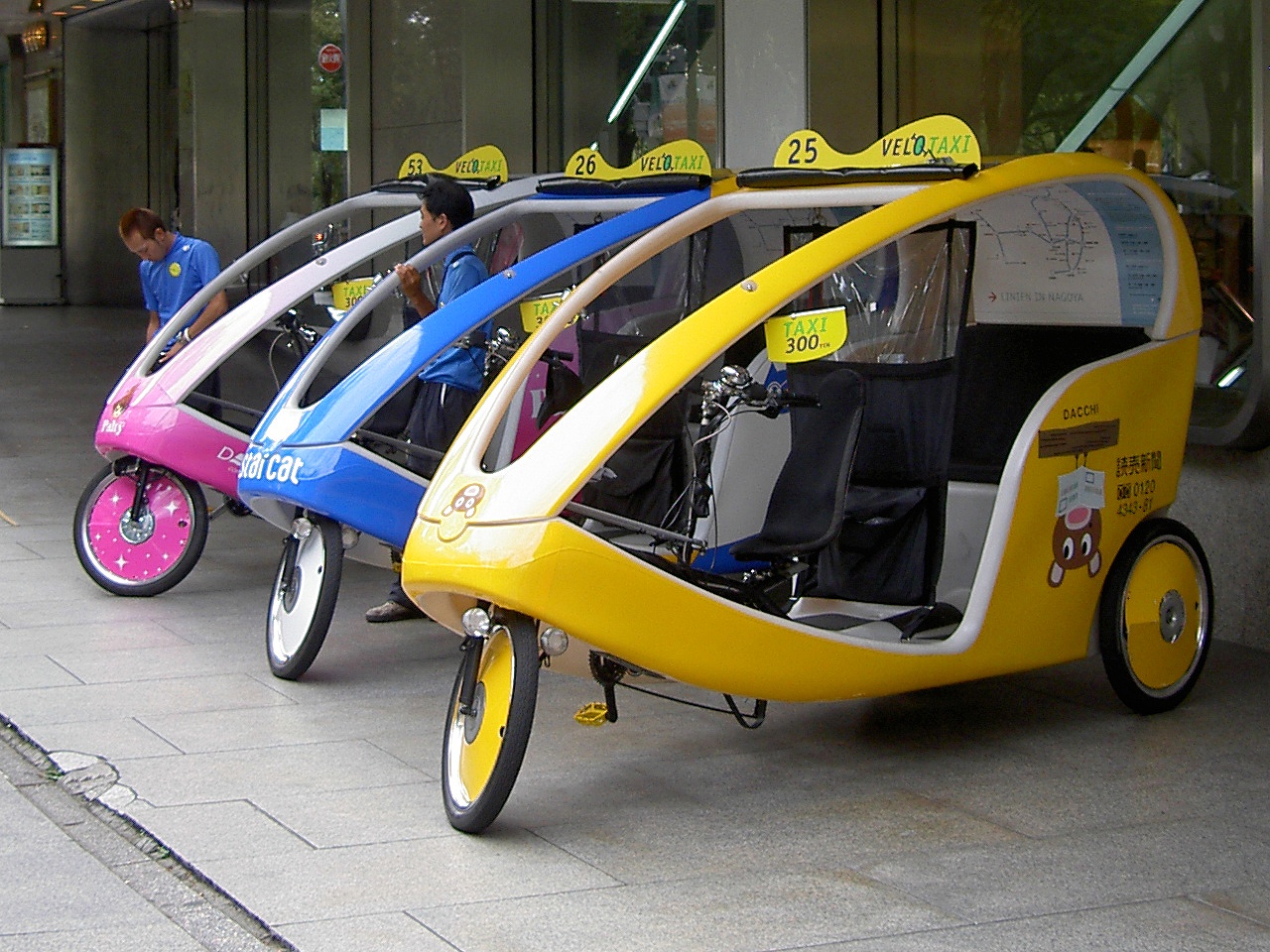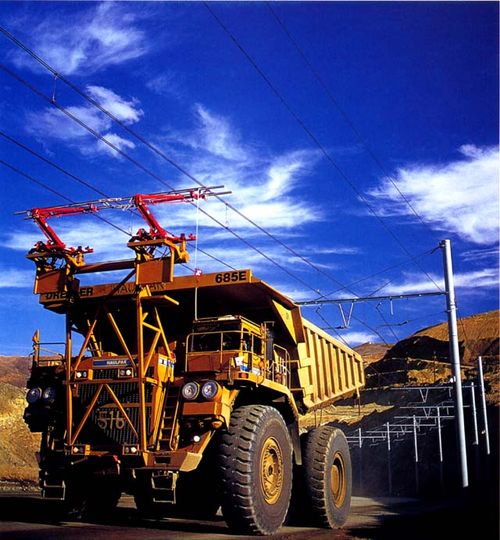As we saw on the Peak Oil page there are still real risks of sudden shortages. Sudden oil shortages cause price rises and inflation. Actual shortages could throw an economy into a Great Depression. But even a Great Depression is vastly different from the collapse scenarios the peaknik doomers go on about. An enduring oil crisis might hurt us economically for a while, but there’s a bright light at the end of that tunnel – with energy independence, local jobs, and cleaner, more attractive city plans the other end. I think we’re slowly heading in that direction anyway – but a really sudden oil emergency would create some big hiccups along the way. What could we do just to get by?
- Rationing
- Sailing
- Wood-gas
- Car-share
- Cycling and Rickshaws
- Localise some supplies
- Trolley buses and trucks
- The same trick can be applied to trucks for a variety of purposes.
- Other weird options
Rationing
Many nations developed comprehensive emergency rationing laws in the 1970’s oil crisis. These laws prioritise oil to essential sectors like agriculture, mass transit, and important long-haul freight. Nations could sign on to an Oil Depletion Protocol to try and stabilise the price while building new infrastructure.
Sailing
Australia had various plans for converting old WW2 diesel cargo ships into 100% sailing boats! “Half the world’s population lives within 60 km of the sea, and three-quarters of all large cities are located on the coast.” (United Nations). Instead of trucking non-urgent items around, we can sail it.

Wood-gas
Wood gas could then truck those sailed items into the city or further inland into rural agricultural zones. It sounds crazy, but many cars during World War 2 were suddenly converted to running on wood. Well, more accurately, the wood is burned and the syn-gas fed through into the engine to burn the wood-gas. They’re ugly great external burners bolted to the outside of the vehicle – but in a national emergency like a war or final oil crisis – they work!
Wood gas vehicles were used during World War II as a consequence of the rationing of fossil fuels. In Germany alone, around 500,000 “producer gas” vehicles were in use at the end of the war. Trucks, buses, tractors, motorcycles, ships and trains were equipped with a wood gasification unit. In 1942, when wood gas had not yet reached the height of its popularity, there were about 73,000 wood gas vehicles in Sweden, 65,000 in France, 10,000 in Denmark, and almost 8,000 in Switzerland. In 1944, Finland had 43,000 “woodmobiles”, of which 30,000 were buses and trucks, 7,000 private vehicles, 4,000 tractors and 600 boats.
Wikipedia
If there was any doubt, America’s FEMA even have a manual on it for oil shortage emergencies. (And you can bet the government have wood gasifier kits in their survival bunkers.) During an oil shortage, most personal local transport would go back to cycling and rickshaws even some horse drawn carriages – for a while. But wood gasification could at least power farming and transport food to feed the nation.
Dirtier emergency fuels like coal-to-liquids might be used, which is not great from a climate point of view. But it might keep civilisation ticking over until other systems are up and running – like the trolley buses mentioned below.
Car-share
It’s obvious that you double the efficiency of a vehicle when you put an extra person it, quadruple it if you put 4 in! Cuba had traffic cops that would wave down a car with space in it and put a hitchhiker in. Mobile phone apps make car sharing even easier.
Cycling and Rickshaws

City drivers may dump the car for a pushbike, save money, lose some weight, get fit, and feel happier about life! Some might even have the money to buy an electric bicycle for those tricker hills. As Cuba’s oil crisis showed, the population would be fitter under rationing. In a really tight oil crisis, many people would be bankrupt and might seek reemployment driving a rickshaw! This might transport the elderly or infirm.
In a really tight oil crisis, pushbikes can also be rigged up with trailers to transport the most essential goods inland! There could even be solar powered fridge trailers to carry essential medicines, etc. There would be a high degree of unemployment, so cyclist-for-hire would be a sought after job!

Cycling-tour guides talk about bikes only carrying cycle packs travelling 40 to 60 miles a day (or 64km — 100km). But that’s just an average cyclist carrying average tourist gear. A professional cyclist would be fitter and able to carry more weight, and possibly even more distance each day. Again, we’re talking emergency measures. All manner of goods and services can arrive by bike. In fact, in some countries they already do! (See Logistics by bike).
Localise some supplies
I remember the story of a truck full of tomatoes heading from Sydney to Perth, and another truck of tomatoes heading from Perth back to Sydney both stopping either side of a bushfire that lasted for a few days. The produce perished. Trucking the same produce back and forth across a nation has to stop! In a real oil emergency, we’ll not only localise some of these silly “3000 mile caesar salad” ingredients, many of the unemployed could be put to work in emergency Victory Gardens. We did this in World War 2. Cuba did something similar after their major oil supplier — the Soviet Union — collapsed. This time it would be a war on oil, instead of for oil! We would encourage local groceries as a matter of national emergency and pride, and only ship the most energy dense long-life canned and packaged foods to inland rural communities.
Trolley buses and trucks
In the first 6 months we’ll get by on the emergency measures above. But if the oil crisis continues into the long term – as in years – we will see other quick-fixes. As we saw on the RAIL page, trains and trams are some of the best long term options. But they can take years, even decades to build. In a sudden oil crisis that then stretches out permanently trolley buses are some of the fastest and cheapest systems to build. And they run on electricity. Sydney has had them before.

Trolley buses can be hybrid electric and synfuel, allowing them to go ‘off the line’ and serve side streets for brief periods. This also means they are not stuck if there is an obstacle on the road ahead as hybrid trolley trucks and leave the line and simply drive around the obstacle.
They do not use rail which saves years of construction time. Light rail can also be a tripping hazard to cyclists and pedestrians.
Here’s a big advantage during an oil crisis-induced Great Depression – they are 5 times cheaper! They give 5 times the transport cover than trams do for the same money! My only issue is I’m not sure trolley buses give New Urban real estate developers the same confidence and incentive to invest money in New Urban developments around trolly-buses as trams do – but in a really serious oil shock, the post-oil future would probably prioritise more energy efficient town plan naturally – moving forward from that disruptive point in history.
As Low Tech Magazine points out,
By choosing the cheaper trolleybus over tram or metro, Quito could develop a much larger network in a shorter time. The capital investment of the 19 kilometre line was less than 60 million dollar – hardly sufficient to build 4 kilometres of tram line (source), or about 1 kilometre of metro line (source). Lower investment costs also mean lower ticket fares, and thus more passengers.
Furthermore, the system is well devised (pdf). There is only one ticket fare, payment happens in the station, not on the bus. Stops are comfortable and built to get fast in and out of the bus, there are very good connections with other lines (sometimes via the same stop), and thanks to the exclusive lanes and (at some crossroads) automatically controlled traffic lights the system is extremely reliable. In Quito, the bus always arrives on time.
Roy Leembruggen is the inventor of the double-decker train. He now thinks that Electric Trolley Buses could be quickly deployed to solve the oil crisis. The Weekly Times states:
“Environmentally friendly clean and efficient electric buses could run on the Ryde route to the city within a year with State Government initiative and support. This was claimed by leading transport engineer and National President of the Electric Vehicles Association of Australia Mr Roy Leembruggen at last week’s World Oil Crisis Forum in Ryde….. Mr Leembruggen said modern advanced electric buses would provide cleaner and more economically and reliable public transport than yesterday’s technology of trams and polluting fossil fuelled vehicles.
Elroy Engineering’s Townobile battery and overhead electric bus is 80 percent cheaper to run than existing conventional buses with zero noise and pollution. Various models have from 120 up to 365 passengers capacity.”
The US Department of transport’s “Transport Research Board” states:
An electric-powered passenger bus has been developed for use in central business districts. The “Townobile” bus, developed in Australia, uses normal industrial lead acid batteries to operate from three to four hours at speeds up to 30 mph. Models with up to 68-passenger capacity are planned. Elroy Engineering of Australia started work on the project in 1970 and production is scheduled to begin in July. “Townobile” can use overhead wires or self-contained batteries for a power supply. It can operate at half the cost of conventional diesel transit buses and involves one-fifteenth the capital outlay of an equivalent tramway system, according to inventor Roy Leembrugger.
The same trick can be applied to trucks for a variety of purposes.

Hybrid trolley-trucks could be geared up to deliver everything from food and groceries to suburban supermarkets through to building materials and other supplies.
As you can see on the left, there are even scaled up versions for huge industrial projects like super-sized mining trucks.
Other weird options
We might see the good old horse and cart spring up in some spots. Other niche markets like interstate freight companies might try their own home-cooked hydrogen scheme. After all, all it takes to make hydrogen is electricity and water. Install an electrolysis kit at each truck depot with a few storage tanks, and a freight company might make their own fuel. In the long run it costs more as the round trip efficiency of the hydrogen economy is so low – and the whole thing runs on electricity. If you have electricity, eventually you’re going to ask why not just charge an electric freight truck – which of course Tesla motors are working on. But of course we’re assuming the oil crisis before then, otherwise you may as well ask “What oil crisis?”
Industries would re-tool around what was available. There might be a rush on weird backyard pyrolysis and biogas systems. Alcohol might get cooked up in some areas. Some might play with boron or start cooking up synthetic diesel. The long term winner is anyone’s guess – I’m betting on EV’s. But the point is there are a variety of short-term solutions, some of which might even prove economical enough to scale up for the long term once Big Oil got dethroned and shoved out the way.





You must be logged in to post a comment.